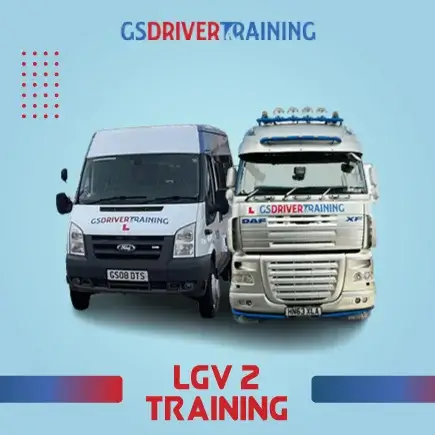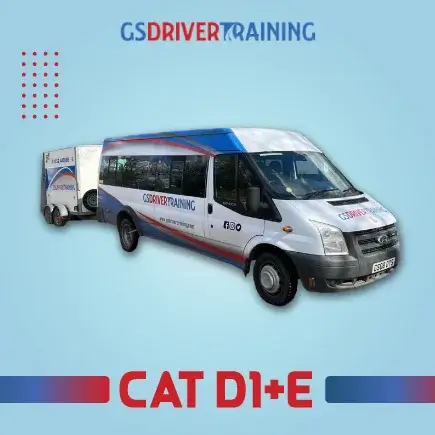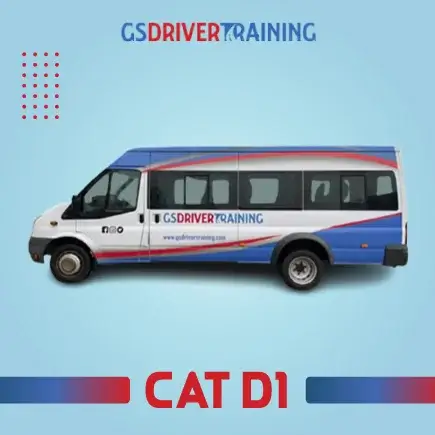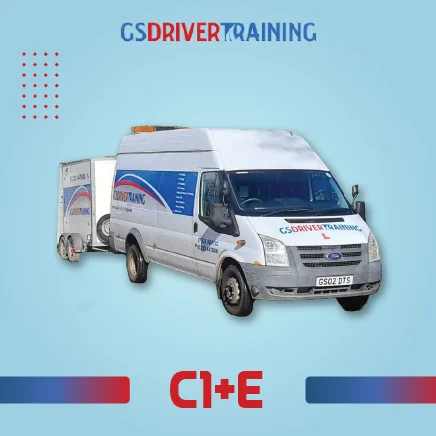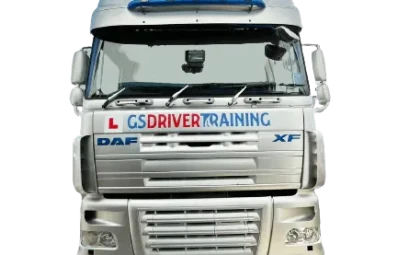Introduction
Are you seeking information on obtaining an artic lorry licence in the UK? Then this blog post is perfect for you! Drop-deck and drawbar trailers are included in many different categories on your driving licence. To get a class 2 driving licence, you must first pass a CPC exam and practical test. Once you have this licence and a Driver Certificate of Professional Competence (CPC) card with a driver qualification card (DQC), you can move on to the category CE, or HGV licence. Keep reading to learn more about the process of obtaining an artic lorry licence.
What is an artic lorry?
An artic lorry – or articulated lorry, as it is more formally known – is a type of heavy goods vehicle consisting of two sections joined together by a pivot, allowing the vehicle to make sharper turns than a normal lorry. Artic lorries are commonly used to transport large, bulky items, as they can carry larger loads than comparable non-articulated vehicles. As such, they are a common sight on UK roads, as most freight companies rely on them to move goods to their destinations.
Categories on Driving Licence
Category C licence
An HGV (Heavy Goods Vehicle) Category C licence is sometimes called an LGV (Large Goods Vehicle) licence. It is a type of lorry licence required by anyone who wishes to drive a large goods vehicle, either for private business or as part of their job. An HGV Category C licence is necessary for vehicles that weigh over 3.5 tonnes and are designed to carry heavy loads, such as lorries, caravans, flatbed trucks, tankers, white vans, and large lorries.
The licence guarantees that the driver is competent and qualified for the job and that the vehicle is safe to be on the road. To obtain an HGV Category C licence, you must be at least 18 years old, have held a driving licence for at least 1 year, and successfully complete a written and practical test. The practical test will cover various topics, such as vehicle operation, loading and unloading, and essential safety checks. If you want to drive any large goods vehicle, an HGV Category C licence is essential. It enables you to safely and legally transport goods on behalf of your employer and drive a safe and reliable vehicle.
Category C+E licence
A HGV Category C+E licence (also known as Class 1 licence) is a licence issued to drivers of certain types of lorries. This licence allows the drivers to drive lorries with a trailer weighing over 750kg. As the lorries are of a higher weight, the driver must pass a series of tests to ensure they have their Category C+E licence. These tests range from theory and hazard perception tests to practical driving tests. Upon completing the test, the drivers would be eligible to drive any vehicle within that particular licence category.
Obtaining a HGV licence is an important consideration for those who wish to operate lorries of a certain weight. The licence itself is legally required and must be held to drive the accompanied lorries. There are several different categories of HGV licences, covering various types of lorries, however the Category C+E licence is the most commonly obtained.
Differences between C and C+E
LGV (Large Goods Vehicle) and HGV (Heavy Goods Vehicle) training courses are essential for anyone looking to become a professional driver. While both training categories involve driving large vehicles, there are several differences between the two. LGV C and C+E courses are two of the most commonly sought-after qualifications. LGV C allows drivers to drive a category C vehicle, a medium-sized Goods Vehicle.
This includes vehicles with a Gross Vehicle Weight (GVW) of between 3,500 and 7,500kg. Drivers must pass Theory and Practical driving tests to qualify for LGV C. At the same time, LGV C+E training is designed to equip drivers with the necessary knowledge and skills to drive a category C+E vehicle, commonly known as an Articulated Vehicle. This type of vehicle has a Gross Vehicle Weight of more than 7,500kg and comprises two parts, the tractor unit and the trailer.
In addition to passing the theory and practical driving tests, C+E drivers must pass a separate Practical Vehicle Test. Clearly, there are differences between LGV C and C+E. In both instances, successfully completing the tests will allow drivers to drive legally on the road. However, it is important to note the various requirements which must be met before obtaining a driving license for either vehicle type.
HGV Licence Application Steps
Age Requirements
You must be 18 or older and have a UK pink driving licence
Theory & Hazard Perception Test
The LGV Theory Test is essential to obtaining a Large Goods Vehicle (LGV) licence in the UK. The LGV theory test is a multiple-choice exam which assesses a driver’s knowledge of the basics of driving, vehicle safety, loading, speed limits, Highway Code regulations, and other issues related to driving a large goods vehicle. Once passed, it is essential for drivers aged 18 and over to obtain an LGV licence before embarking on their professional driving career.
The LGV Hazard Perception Test is the second part of the LGV Theory Test. This test assesses a driver’s ability to spot potentially dangerous situations when out driving. It consists of a series of video clips of everyday driving situations and requires the driver to identify developing hazards. The sooner they can identify it, the higher the score. Like the LGV Theory Test, the Hazard Perception Test must be passed before going on to the practical driving test for the LGV licence.
Before Taking the Practical Test
Medical Check
A Driver medical or HGV medical (HGV stands for Heavy Goods Vehicle) is a health assessment that HGV drivers are required to pass to gain and keep their HGV driver’s licence. The Department of Transport requires all professional HGV drivers to have a medical assessment by a doctor to ensure they are still physically and psychologically fit to be a professional HGV drivers. This assessment is usually done every five years or upon a driver’s licence renewal.
The assessment ensures that a driver meets the minimum medical standards and regulations before being allowed to carry passengers and cargo. The medical assessment will include a vision test, a general medical questionnaire and possibly a physical examination. The medical assessment also serves to detect any medical issues that may affect a driver’s safety performance, including being able to observe any warning signs, be aware of any physical or medical obstacles that could impede their ability to react quickly when driving and determine the driver’s overall fitness for the road.
Drivers CPC Course
An HGV Drivers Certificate of Professional Competence (CPC) course is required for any UK driver looking to drive a commercial lorry or a bus. To obtain a CPC, drivers must attend a total of 35 hours of courses split into two modules. The first is Module 2 – Theory Test, and the second is Module 4 – Practical Demonstration Test. Module 2 covers vehicle safety, security, loading, record keeping, and professional driving behaviour.
The Module 4 practical demonstration test shows how a driver performs daily checks on their vehicle, safely and securely loads it, manoeuvres it in its operating environment, and interacts with other road users. At the end of the 35-hour course, drivers must sit a separate test for every module, proving they understand and have learned the required information. Once this test is successfully completed, drivers are granted a Driver CPC Qualification Card. Driver CPC Qualification Cards must be kept in the driver's possession when on the road, as they are checked regularly by authorised persons.
Provisional Licence
If you want to get your HGV Provisional Licence in the UK, you must meet certain requirements and pass the relevant theory and hazard perception tests. First, you should check the Driver and Vehicle Standards Agency (DVSA) website to ensure you meet the minimum standards. You must ensure you're fit with the appropriate language and medical certificates.
Once you've passed the basic eligibility requirements, you'll need to book your HGV theory test, which covers the Highway Code, vehicle weights and dimensions and vehicle safety. You'll also need to pass a Hazard Perception Test, which looks at how you anticipate and react to different driving situations. With your tests passed, you can apply for your HGV Provisional Licence.
You'll need to complete the D2 application form and provide two passport photographs along with a fee of £50. Once your licence has been processed, you can prepare for the Practical Driving Test. The test will cover on- and off-road driving, demonstrating your ability to drive safely in all conditions. Good luck!
The Driving Test
The HGV Driving Test is the examination required for anyone wanting to apply for a licence to drive larger vehicles – specifically, HGV class 1 vehicles. The test is carried out by the Driver and Vehicle Standards Agency (DVSA) in the United Kingdom and consists of a theory and practical element.
The theory element covers topics such as Vehicle Weight, Load Restrictions, Vehicle Documentation and Special Loading & Unloading Rules, followed by a multiple-choice paper. The practical element of the test is divided into three sections and includes vehicle safety & maintenance checks, a vehicle driving assessment which involves driving on public roads and finally, a reversing & parking assessment. Completing the test will enable new drivers to hold a licence to drive HGV Class 1 vehicles legally.
Location
GS Driver Training is located at GU6 8TB in the Dorking area of Surrey. We are a family-run driving school that provides quality tuition throughout the Dorking and surrounding districts. Our team of friendly and experienced instructors are here to help, whatever your experience level may be.
Whether you are a beginner driver or an experienced one, we have the right package for you. With an extensive fleet of modern, well-maintained vehicles, we guarantee your tuition will be of the highest standard. We understand the importance of being able to drive and the convenience and independence that comes with it, so our instructors provide tuition tailored to your needs and expectations. So if you're looking for a driving school in the Dorking area, look no further than GS Driver Training at GU6 8TB.
We look forward to hearing from you soon!
Cost
The cost of getting your Heavy Goods Vehicle (HGV) Class 1 licence can vary. Generally, completing the training and the required tests will cost around £1,500 to £2,500. This sum includes the Driver CPC training, theory and practical tests, and the DVLA application fees. It is always best to seek out local driving schools for an exact quote, as they can offer competitive prices and provide you with any necessary advice.
Duration
The time it takes to get your HGV Class 1 licence depends on the individual learner. Generally, it takes 3-6 weeks to complete the full HGV training package, of which theory, practical and licence acquisition are all separate stages. During the HGV training, you can expect to complete 30 classroom-based study hours, 12 hours of driving lessons in a range of vehicles and up to 10 hours of driving under the supervision of an approved instructor. The final stage in HGV training is obtaining the Category C+E (Class 1) lorry licence, which requires successfully completing both a theory and a practical exam. After successfully completing these tests, you can expect to receive your licence in the post.
Driving Licence Categories
https://www.gov.uk/driving-licence-categories
The UK's Driving licence categories are divided into different categories, which indicate what types of vehicles you are permitted to drive. The most common driving licence categories are A, B C, C+E and D.
Category A permits holders to drive motorbikes Category B licences apply to any car or van up to 3,500kg
BE category is now given when you get your car licences and there is no separate test for it.
Category C1 HGV licence covers larger vehicles weighing between 3,500kg and 7,500kg.
Category C HGV licence covers larger vehicles weighing over 7,500kg.
Category C+E HGV licence covers all C and B categories, including any vehicle with a trailer weighing over 750kg – this includes lorries, buses, and coaches if you have a D licence.
So, if you’re looking to drive a car, you will need a Category B licence, while heavier vehicles, such as lorries.
Coaches require driving licence category D. Make sure you check the regulations before driving any large vehicle.
FAQ
Q: What is an Artic Lorry Driving Licence?
A: An artic lorry licence is a licence issued by the Driver and Vehicle Licencing Agency (DVLA) allowing drivers to operate large goods vehicles. This can include semi-trailers, articulated lorries and double-decker heavy goods vehicles.
Q: How do you qualify for an Artic Lorry Driving Licence?
A: Firstly, you must hold a valid UK Learner Permit or Full driving licence category C1, which requires a medical examination. You must also be over 21 and have held the licence for at least two years. You must also have a valid Driver Certificate of Professional Competence (CPC).
Q: What types of tests are required for an Artic Lorry Driving Licence?
A: Drivers must complete three separate tests; a theory test, a hazard perception test and a practical driving test.
Q: How much do the tests cost?
A: The theory test cost is £23, the hazard perception test is £11, and the practical on-road driving test is £115. the off-road test fee is £40 which must be completed before the on-road driving test.
Q: Where can I go for driver training and tests?
A: After gaining your provisional licence, you should look for registered training centres. A variety of centres are available throughout the country, which can be found online or through a local jobs centre.
Q: How long does it take to get an Artic Lorry Driving Licence?
A: The timeframe for getting an artic lorry licence depends on how quickly you can obtain and pass the tests. The practical driving test is appoximately one and a half hours. However, booking the training will usually take between 4 and 12 weeks, depending on local availability.
Q: Are there any additional requirements for obtaining an Artic Lorry Driving Licence?
A: In addition to the documents stated above, you must provide your employer with evidence of a valid Driver's Certificate of Professional Competence (CPC) as part of the application.
Q: What happens if I lose my Artic Lorry Licence?
A: If your licence is lost or stolen, you must immediately inform the police and DVLA, who will issue a new licence. This will cost £20 and can take up to 10 working days.
Q: What is an HGV training course?
A: An HGV training course is a course designed to teach drivers about Heavy Goods Vehicles (HGVs) used for commercial road transport operations. It consists of both theory and practical elements and is designed to provide drivers with the skills and knowledge necessary to safely operate an HGV.
Q: Who needs a Heavy Goods Vehicle (HGV) licence?
A: Any person driving a vehicle over 3.5 tonnes or more needs a Heavy Goods Vehicle (HGV) licence. This includes articulated lorries, trucks, and other vehicles of a similar size.
Q: Who needs a Heavy Goods Vehicle (HGV) licence?
A: Any person driving a vehicle over 3.5 tonnes or more needs a Heavy Goods Vehicle (HGV) licence. This includes articulated lorries, trucks, and other vehicles of a similar size.
Q: What do I need to do to obtain an HGV licence?
A: In order to obtain an HGV licence you should undertake an HGV training course and then pass a DVSA practical driving test. You must also get a medical certificate declaring you fit to drive a Heavy Goods Vehicle and you should pass a theory test.
Q: What are the different types of HGV licences?
A: There are four main types of HGV licences, they are: Category C1 (7.5 – up to 32 tonnes), C (over 32 tonnes) and C+E (over 35 tonnes with trailer).
Q: What is the DLVA licence code for a C+E licence?
A: The Driver and Vehicle Licensing Agency (DVLA) code for a C+E licence is CE.
Q: What is the maximum weight of vehicle permitted on a C licence?
A: The maximum weight permitted on a C licence is 32 tonnes.
Q: What documents do I need for my HGV medical?
A: You will need to provide your GP driving licence, and any relevant medical records before you can get your full HGV medical.
Q: What is a Driver Certificate of Professional Competence (Driver CPC)?
A: The Driver Certificate of Professional Competence (Driver CPC) is a professional qualification required for those driving Heavy Goods Vehicles (HGVs) in the UK. It is designed to improve the driving standards of professional drivers, and to reduce road accidents involving HGVs.
Q: What is the minimum age requirement for a C+E licence?
A: The minimum age for obtaining a C+E licence is 18 years old.
Q: What Is HGV Training?
A: HGV training is the training required to obtain a Heavy Goods Vehicle (HGV) licence to legally drive large goods vehicles up to 44 tonnes in weight in the UK. It involves both a theory and a practical test.
Q: How Long Does HGV Training Take In Surrey?
A: The length of HGV training in Surrey typically varies depending on the individual's experience and skill level. Generally, it takes around one to four weeks to complete the full course, as long as all the necessary modules are completed.
Q: How Much Does HGV Training Cost In Surrey?
A: HGV training in Surrey usually costs between £1500 and £3000, depending on the length of the course and the level of skill required.
Q: Where Should I Look For HGV Training Opportunities In Surrey?
A: There are many HGV training providers in Surrey that offer courses. A good place to start is online, where you can search for local training courses and compare their prices and course content. Alternatively, you can speak to HGV recruiters in the area, as they often run training courses for drivers.
Q: What Are The Benefits Of HGV Training In Surrey?
A: There are many benefits to undertaking HGV training in Surrey, including the opportunity to have a long and successful career in driving HGV vehicles, access to competitive wages, and a chance to work in a dynamic and exciting environment.
Q: What Are The Steps Involved In The HGV Training Process In Surrey?
A: The HGV training process in Surrey typically includes a medical examination, completion of the Driver Certificate of Professional Competence (CPC) module, completion of the HGV theory test, and a practical test, depending on the driver's experience.
Q: Are There Any Requirements To Take HGV Training In Surrey?
A: Yes, in order to take HGV training in Surrey, the individual must be over 18 years old and either hold a valid provisional or full EU/UK driving licence.
Q: How Can I Prepare For HGV Training In Surrey?
A: The best way to prepare for HGV training in Surrey is to read up on the relevant topics and practice the theory test. Additionally, it is important to get some practice driving ahead of the practical test, to ensure you understand the basics and are fully prepared for the test.
Q: What Should I Look Out For When Choosing An HGV Training Provider In Surrey?
A: When choosing an HGV training provider in Surrey, it is important to make sure they are fully registered and licenced and experienced with the type of HGV training you need. You should also ask about the course length and the cost and take a look at any previous student testimonials.


